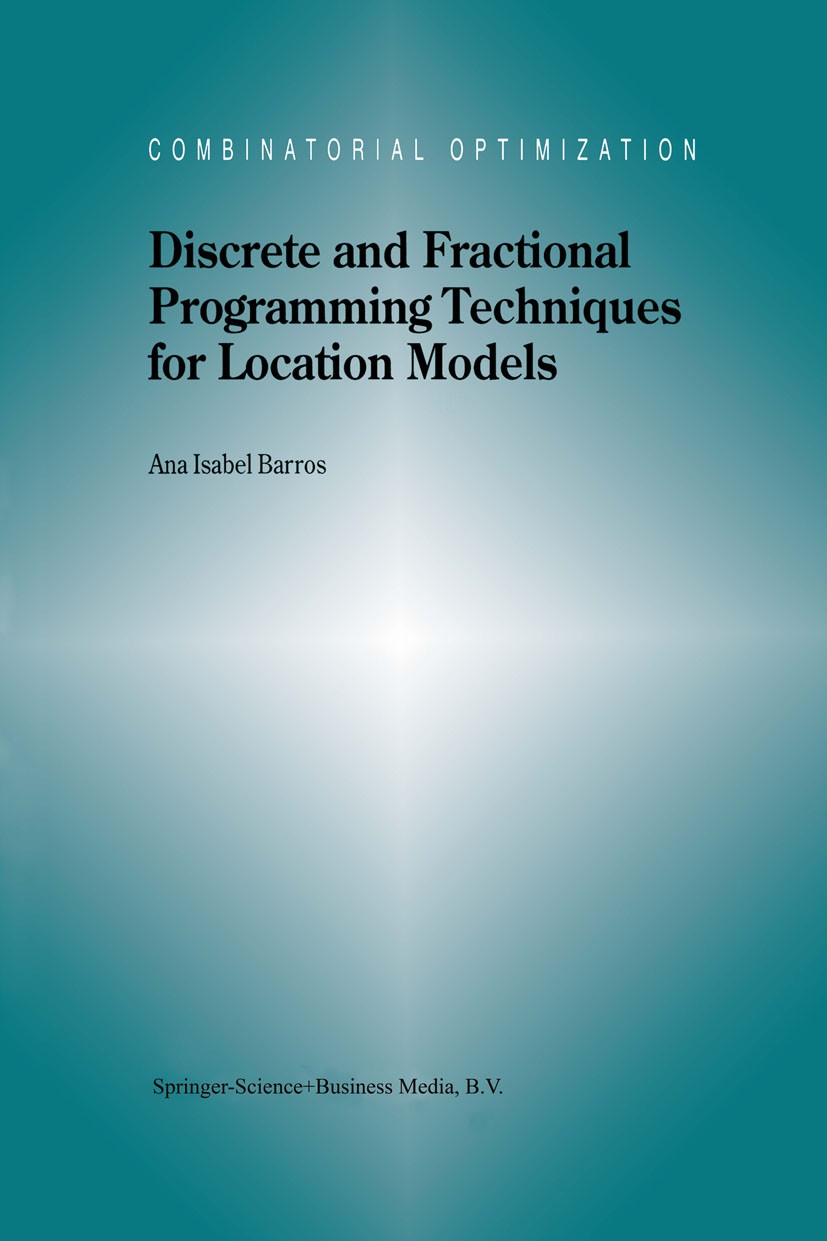| 书目名称 | Discrete and Fractional Programming Techniques for Location Models | | 编辑 | Ana Isabel Barros | | 视频video | http://file.papertrans.cn/282/281185/281185.mp4 | | 丛书名称 | Combinatorial Optimization | | 图书封面 |  | | 描述 | At first sight discrete and fractional programming techniques appear to be two com pletely unrelated fields in operations research. We will show how techniques in both fields can be applied separately and in a combined form to particular models in location analysis. Location analysis deals with the problem of deciding where to locate facilities, con sidering the clients to be served, in such a way that a certain criterion is optimized. The term "facilities" immediately suggests factories, warehouses, schools, etc. , while the term "clients" refers to depots, retail units, students, etc. Three basic classes can be identified in location analysis: continuous location, network location and dis crete location. The differences between these fields arise from the structure of the set of possible locations for the facilities. Hence, locating facilities in the plane or in another continuous space corresponds to a continuous location model while finding optimal facility locations on the edges or vertices of a network corresponds to a net work location model. Finally, if the possible set of locations is a finite set of points we have a discrete location model. Each of these fields has be | | 出版日期 | Book 1998 | | 关键词 | algorithms; calculus; combinatorial optimization; linear optimization; nonlinear optimization; operations | | 版次 | 1 | | doi | https://doi.org/10.1007/978-1-4615-4072-4 | | isbn_softcover | 978-1-4613-6824-3 | | isbn_ebook | 978-1-4615-4072-4Series ISSN 1388-3011 | | issn_series | 1388-3011 | | copyright | Springer Science+Business Media Dordrecht 1998 |
The information of publication is updating

|
|
 |Archiver|手机版|小黑屋|
派博传思国际
( 京公网安备110108008328)
GMT+8, 2025-11-12 08:01
|Archiver|手机版|小黑屋|
派博传思国际
( 京公网安备110108008328)
GMT+8, 2025-11-12 08:01


